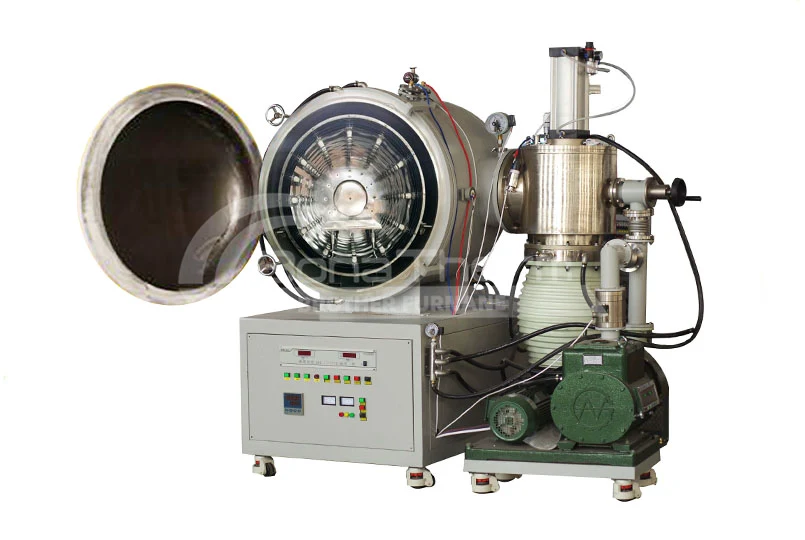seo@bonaregroup.com
Email Us

The vacuum heat-resistant steel thermal field brazing furnace is a Vacuum Brazing Furnace suitable for low melting point workpieces such as aluminum alloys, and can be used as a Vacuum Furnace for low temperature sintering and low temperature heat treatment.
Starting from the internal structure, we show you the unique design logic of vacuum brazing furnace products:

The chamber is made of stainless steel metal.
Electric heating alloy aluminum tube for heating.
Electric heating alloy tube ring heating.

Mechanical pump + diffusion pump vacuum unit.

Optional stainless steel multi-layer rack for easy external placement of multi-layer brazing workpieces.

PLC automatic control system, the human-machine interface adopts high-definition touch screen, and has a built-in operating system developed by us.
Focusing on actual scene applications, we will highlight the advantages of vacuum brazing furnace equipment functions for you:
7x10-3pa.
750℃
| Type | Color | Recommended temperature(℃) |
| AlSi12 | black | 580 |
| AlSiCu | black | 480~550 |
| Zn98Al | black | 450 |
| ZnSnCu | black | 380 |
Upper limit alarm, deviation alarm, automatic stop at the end of program operation, no need for human supervision.
Vacuum brazing furnaces can cover multiple fields and demonstrate their cross-industry adaptability and practical value:





Aiming at the characteristics of various materials, the core advantage of the product is its compatible processing:












Focus on answering common questions to provide users with clear and practical usage guidelines:
A:Our Vacuum heat-resistant steel thermal brazing services offer strong resistance to high-temperature deformation and excellent corrosion resistance, making them ideal for medium- and low-temperature processes where longevity and cost-effectiveness are paramount.
A:Compared to other vacuum brazing furnaces, vacuum brazing furnaces for heat-resistant steel thermal brazing furnaces are more cost-effective, making them ideal low-temperature brazing equipment.
Present performance details with accurate data, intuitively showing the core technical specifications of the vacuum brazing furnace:
| Types | Heating Zone (Width x Height x Depth)mm |
Working Temperature(℃) | Power(KW) | Power Supply(V) |
|---|---|---|---|---|
| BR-QHS-223 | 200X200X300 | 750 | 12 | 380 |
| BR-QHS-334 | 300X300X400 | 750 | 21 | 380 |
| BR-QHS-446 | 400X400X600 | 750 | 34 | 380 |
| BR-QHS-557 | 500X500X700 | 750 | 46 | 380 |
| BR-QHS-669 | 600X600X900 | 750 | 64 | 380 |
Control of all links from raw materials to finished products:
Stainless steel sheets and high-temperature-resistant alloys are selected, meeting vacuum sealing and load-bearing standards.
Cut raw materials according to design drawings using specialized equipment to ensure dimensional tolerances.
Bends and forms the sheet metal, processing the furnace shell and chamber components with a bending angle accuracy of ±1°.
Lathes are used to process precision components such as flanges and connectors, ensuring surface roughness control.
Weld the furnace body welds, ensuring airtightness on key components, and perform post-weld inspection.
Grinds and trims welded components to ensure a smooth appearance without sharp edges.
Electrostatically sprays the furnace shell and dries it.
Install the vacuum system, heating element, temperature control module, cooling system, and tighten connectors.
Conduct vacuum tests, temperature rise tests, and safety checks.
Internally cushioned with pearl cotton, externally covered with waterproof film and wooden crates, with anti-collision markings and equipment parameter labels.